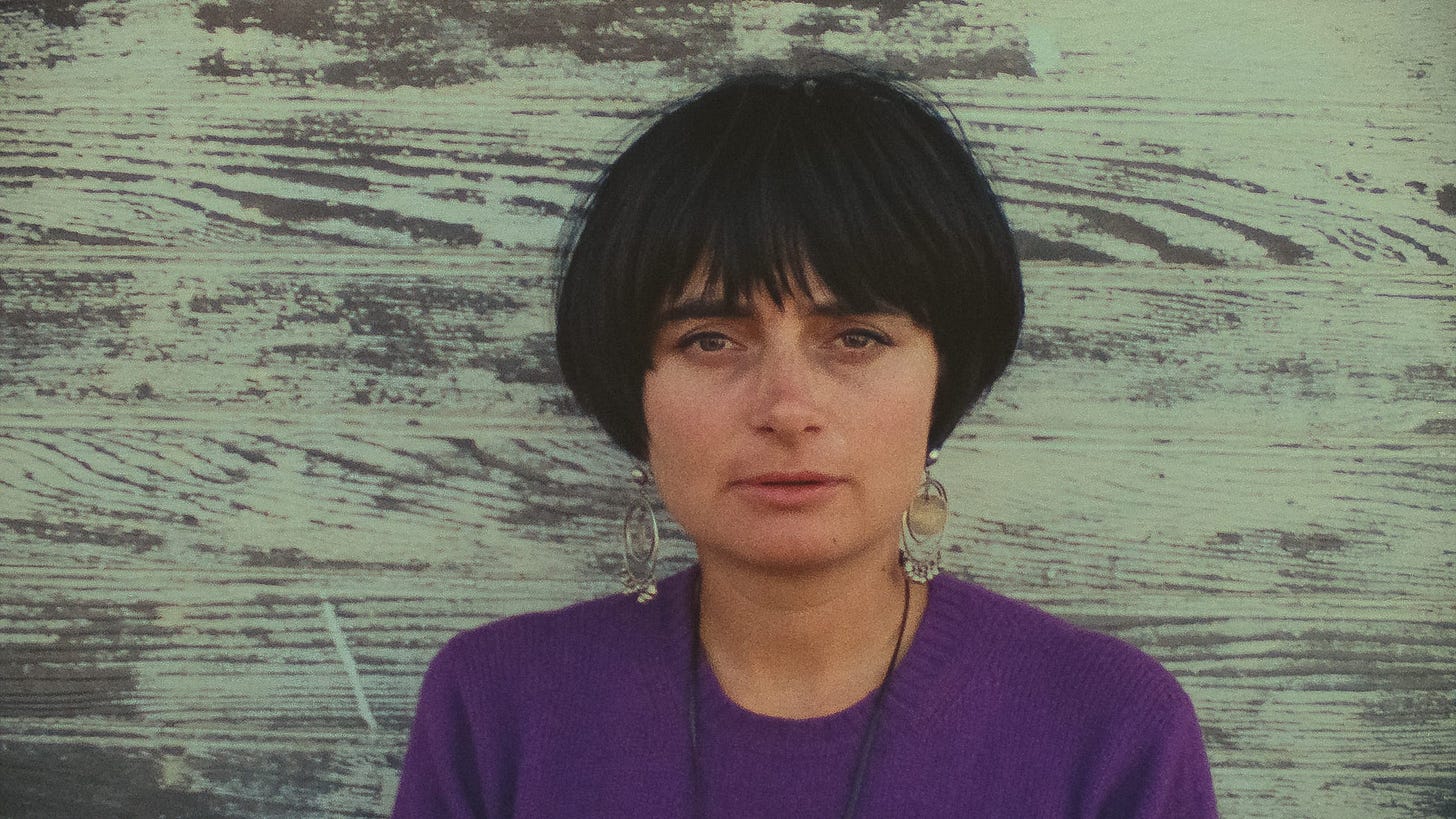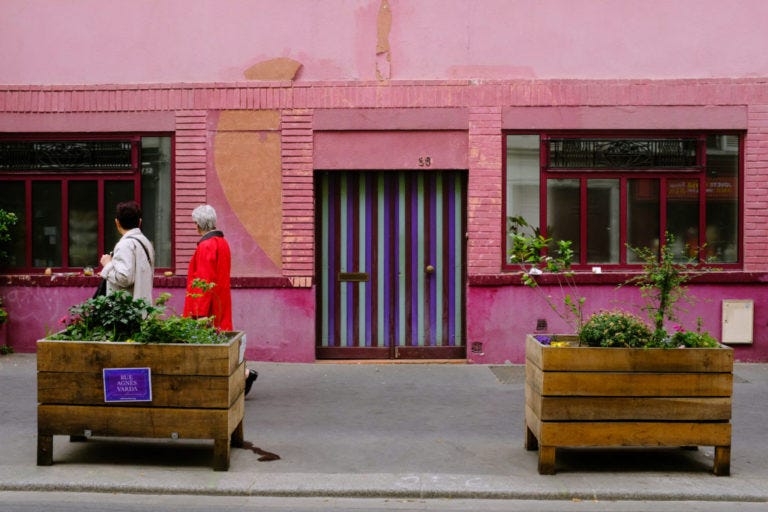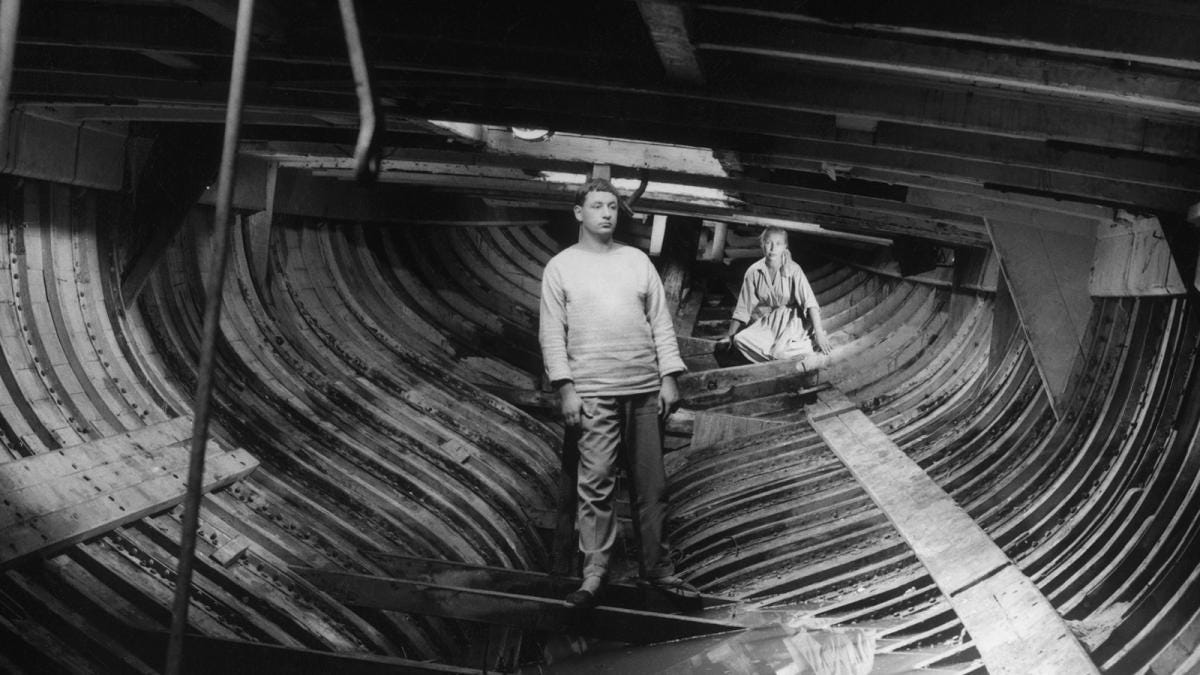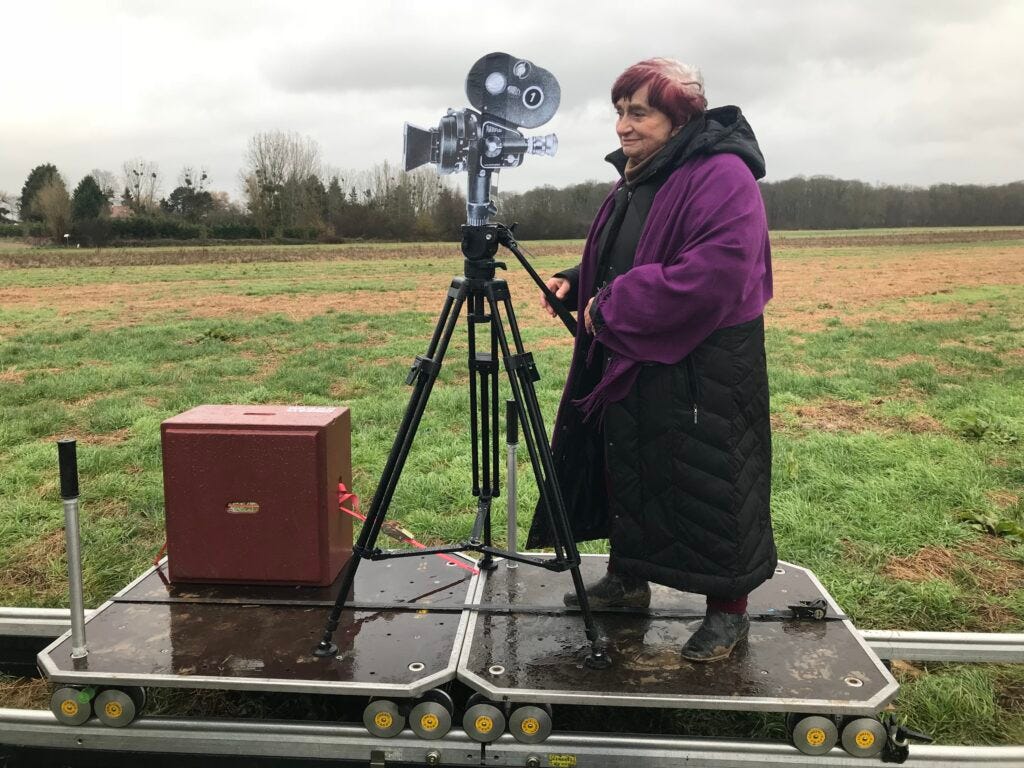Learning from Agnès Varda
Life philosophy of the great French filmmaker
Agnès Varda’s Director’s Inspiration was a gift I gave to myself this past Christmas. The book - through essays, images, and interviews with her - explores three key aspects of her creative life: photography, filmmaking, and visual art. A fitting trio, considering how seamlessly she moved between them, never bound by form but always tethered to curiosity.
“I thought that pictures plus words, that was cinema.
It was only later that I discovered it was something else.”
Her early work as a photographer was a kind of training ground for filmmaking—an act of scouting, of seeing. She understood lenses, light, and composition before she ever directed moving images. She had the technical skills to run a set, but what set her apart was how she wielded them: always with a playful spirit, always with an openness to discovery.
There’s so much to learn from her—not just about filmmaking, but about how to live as an artist.
Be a Nice Person—And Have a Good Sense of Humor
Varda has been described as one of the most approachable, unpretentious artists in cinema. She sought whimsy even in serious subjects.
From 1951 until her passing, she lived in a modest home on rue Daguerre in Paris. It wasn’t much when she moved in—no heat, no proper plumbing. But she filled it with trinkets, children, and cats, turning it into something warm and deeply personal. Later, she transformed the house itself into art, painting it with giant purple polka dots, then pink with a mauve-striped door.
As her career evolved, she expanded—converting the building next door into her production company, Ciné-Tamaris, and taking over an abandoned shop across the street. But success never distanced her from people. She edited her films in the front room, and when admirers knocked on her door, she invited them in for tea. For Varda, filmmaking was never a one-way act.
She'd sit in the front room editing her latest project but would stop for tea when admirers dropped by,” Peter Debruge writes.
“Instead of being annoyed by such interruptions, she welcomed them. In Varda's view, sharing-that is, discussing audiences' personal reactions to her work-was the key reason to have made the films in the first place.”
Unlike many directors who shape films to be experienced the same way by all audiences, Varda treated each film as a message in a bottle, Debruge writes. She sent it into the world, knowing that every viewer would read it differently. Maybe that’s why her films feel like a conversation with an old friend—one who listens, but isn’t afraid to challenge you.
Find What Makes You Tick Through Your Medium
Varda saw filmmaking as a treasure hunt. She likened her method to gleaning—the act of gathering what others have left behind. In The Gleaners and I (2000), she turned her camera on those who collect discarded food and objects, those living on the fringes of society. But she also saw herself as a gleaner, amassing fragments of life in her travels.
“I never made films about the bourgeoisie, about heads of industry, bankers. I’m attracted by people who are out of place, people without power. I find them very interesting because by filming them, you give them... not power, but the dignity of inventing their own words.”
Her subjects often break the fourth wall, looking straight into the camera—straight into us. She embraced digital video as it emerged, filming her own aging hands, contemplating time’s passing. She wasn’t just documenting the world; she was gathering pieces of it, rearranging them, making meaning from scraps.
Don’t Be Beholden to One Form of Filmmaking
Varda’s work defies categorization. She made narrative films, documentaries, short experimental pieces—whatever she was moved to create.
Martin Scorsese once said that Varda broke all the forms of what a film should be. He credits her with inspiring him to make documentaries on impulse, a practice that became central to his career.
“She made films of all shapes and sizes as she was moved to,” Martin Scorsese says.
“It wasn’t just that she had trouble getting features made; I think the muse took her in different directions. And she never stopped. The freedom to do films of any length, slip and slide in time, and break down narrative and the barriers between fiction and nonfiction; that comes from Agnès.”
Varda embraced constraints, but on her own terms. In the early 1970s, while raising her young son, she was offered a directing opportunity for German television. Since she couldn’t travel far, she made Daguerréotypes a documentary about the shopkeepers in her own neighborhood.
“I set out from this idea... that most women are stuck at home. And I attached myself to my hearth. I imagined a new umbilical cord. I had a special 80-meter electric cable attached to the electric box in my house. I decided I would allow myself that much space to shoot Daguerréotypes. I could go no further than the end of my cable.”
Find Influences Outside of Film—And Develop Your Own Blended Style
Varda wasn’t shaped by cinema in the usual way. She’d seen fewer than ten films before deciding to make La Pointe Courte (1955). Instead of following the conventions of filmmaking, she turned to literature.
She modeled the film’s structure on William Faulkner’s The Wild Palms (1939), which interweaves two separate but thematically connected stories. She was inspired by the collage techniques of Dos Passos, the poetic interiority of Virginia Woolf.
Varda coined a word for her filmmaking approach: cinécriture—cinematic writing.
“The cutting, the movements, the points-of-view, the rhythm of filming and of editing have been felt and determined like the choices of a writer.”
A Filmmaker Without Borders
Varda moved fluidly between fiction and nonfiction, between personal storytelling and political engagement. She followed her instincts, allowed herself to change.
She showed us that filmmaking isn’t just about capturing the world—it’s about shaping it, remixing it, adding yourself to it. It’s about being open. About listening. About embracing limits and breaking them when necessary.
And maybe, most importantly, it’s about welcoming people in—for tea, for conversation, for whatever happens next.










